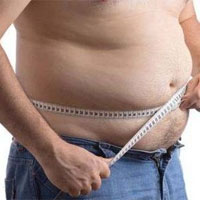TRACKING YOUR WEIGHT LOSS PROGRESS
 Keep an Eye on Your Body Fat
Keep an Eye on Your Body Fat
Those who wish to lose weight are usually fixed on what the scales would show. There’s nothing wrong with that although it may be more useful to see how your body fat, rather than your body weight, changes. The percentage of fat can be quite different in people with the same weight.
By keeping an eye on your body fat, you can gain a better perspective on the amount you really need to lose. Also, you are this way able to see whether you’re doing well with your routine or if you should strive harder. Don’t be surprised if your scale weight remains the same. This is quite normal, particularly if you get rid of the extra fat and actually amass muscle.
Use Different Methods to Check Your Body Fat Loss
You can opt among:
• Calipers
• Bioelectrical impedance scales
• DEXA (Dual Energy X-Ray Absorptiometry)
• Hydrostatic weighing
• Online calculators (these are usually used together with skinfold or tape measurements)
The healthy body fat range is considered somewhere between 25 and 31% for women and, slightly lower, between 18 and 25% for men. If you hesitate over the best way to check your body fat, note that most fitness centers offer body fat testing.
Taking Your Body Fat Index the Right Way
Here are some ideas on how to measure body fat index accurately:
• Fitness instructors recommend checking your body fat index once a week or every other week. You know that your body fat won’t melt during the night, don’t you? Plus, you may overlook the minor changes if you keep checking it every day.
• Ask the same person to check it every time. First, however, make sure they are qualified. It is possible to be given different measurements if checked by a different person each time.
• It’s worth knowing that with bioelectrical impedance scales circumstances matter a lot. Factors, such as food intake, hydration and skin temperature, can influence the body fat ratio.
• Take down the figures of your body fat in a journal or calendar.Finally, you can test your own knowledge over body fat by taking the Body Fat Quiz.
The Pros and Cons of Scales
As you have already read in this article, scales are not to be entirely trusted when it comes to weight or weight loss progress. This is why many experts tend to disapprove of scales as the single means of measuring the lost weight. What is more, we are all aware of the connotations they often bring. We constantly see or hear about frustrated people who are obsessed with scales and their obstinate measurements.
The basic thing to remember about scales is that everything falls within the numbers they show: muscle, fat, organs, bones, even what you have just drunk. They are absolutely useless in showing what you have lost or gained which is essential for those inclined to reduce their weight. Fat is what most people wish to get rid of. Bear in mind that some factors might make the scales show greater numbers (10 lbs more than you usually weigh, for example). These include:
• Water. As much as 60% of our body is water, so if your hydration levels change, the number on the scale will also do. When we have taken less fluids or too much salt, our body tries to preserve the remaining water, which might make us weigh a little bit more. Some women may seem to weigh more during their menstrual cycles for the same reason.
• Food. Probably the worst idea would be to indulge in a meal and then take down your weight. There’s hardly anyone to doubt the fact that the food taken in contributes to weight. This is not some weight that you have permanently put on but such that will affect the temporary measurements of the scales.
• Muscle. Muscle differs significantly from fat in terms of substance. Muscle build is very likely to increase your overall weight despite the fact that you don’t see it or actually seem slimmer. However, don’t hurry to throw the scale away. It can give you quite accurate results when used together with the body fat ratio. Only this combination can show if you're losing the right kind of weight, fat that is.
Here’s how to be sure: multiply your weight by your body fat percentage. For example, a person who weighs 150 lbs with 21% of body fat has 31 lbs of fat and 118 lbs of lean tissue (and the same example in figures only: 150 x .21 = 31.5 lbs of fat, 150 - 31.5 = 118 lean tissue). You will able to estimate what or how much you’re losing or gaining by taking down such numbers every week or month.
[AD]








